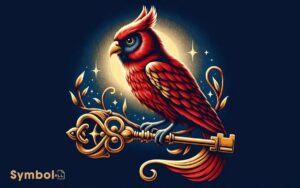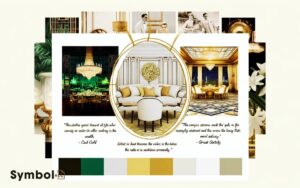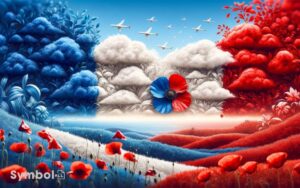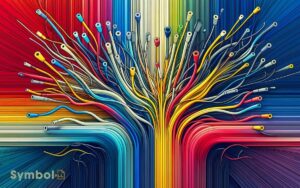Color Symbolism in Literature: Ideas, Emotions!
Color symbolism in literature refers to the use of color as a powerful tool to convey deeper meanings and evoke emotional responses.
Authors use colors to represent ideas, emotions, or states of mind. For instance, red can symbolize passion or anger, while blue might evoke a sense of calm or sadness.
Color symbolism is a literary device where colors are imbued with symbolic meaning beyond their literal sense.
Colors can act as metaphors or symbols for larger concepts. For example, in Western cultures, white often represents purity or innocence, whereas in some Eastern cultures, it may symbolize mourning.
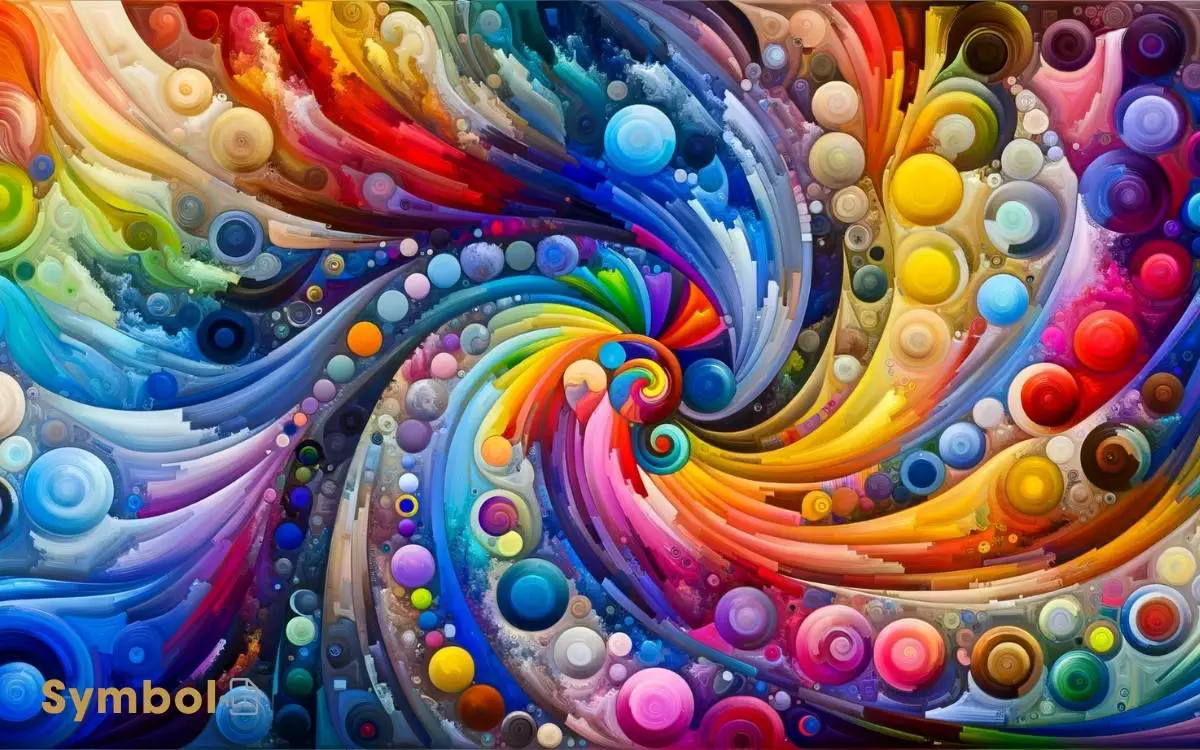
Key Takeaways
13 Color Symbolism in Literature
| Color | Symbolism in Literature | Common Associations |
|---|---|---|
| Red | Passion, love, anger, danger, power | Blood, fire, hearts, roses |
| Blue | Calmness, stability, sadness, serenity | Sky, ocean, ice, sapphires |
| Green | Growth, envy, fertility, freshness, nature | Grass, leaves, emeralds |
| Yellow | Happiness, energy, intellect, caution | Sun, gold, lemons, canaries |
| Purple | Royalty, luxury, wisdom, dignity | Lavender, amethyst, velvet |
| Black | Death, evil, mystery, elegance, the unknown | Night, formal wear, obsidian |
| White | Purity, innocence, goodness, cleanliness | Snow, doves, cotton, weddings |
| Orange | Creativity, adventure, enthusiasm, success | Pumpkins, tigers, marigolds |
| Pink | Femininity, romance, innocence, softness | Cherry blossoms, flamingos |
| Grey | Neutrality, uncommitted, indecision, compromise | Fog, ash, steel |
| Brown | Earth, stability, hearth, home, outdoors, reliability | Soil, wood, leather |
| Gold | Wealth, prosperity, valuable, traditional | Coins, jewelry, medals |
| Silver | Modernity, high-tech, sleekness, grace, elegance | Electronics, jewelry, cutlery |
The Essence of Color Symbolism
Delving into color symbolism, you’ll uncover its profound ability to convey complex emotions and ideas, serving as a silent yet powerful narrative device in literature.
Each hue holds a universe of meaning, transcending mere aesthetic appeal to embody deeper significances. Red, for instance, often symbolizes passion, danger, or power, igniting readers’ emotions and drawing them deeper into the narrative’s heart.
Meanwhile, blue can evoke tranquility, sadness, or freedom, setting a tone that resonates with the audience’s innermost feelings.
Through careful selection, authors weave these colors into their storytelling fabric, enriching narratives with layers of meaning that invite readers to look beyond the surface.
This nuanced use of color amplifies the emotional weight of words, transforming mere text into a vivid, multi-sensory experience.
Decoding Blacks Mystique
In literature, black’s mystique often embodies the intricate dance between mystery and finality, inviting you to explore its depth beyond the apparent darkness.
This color, rich in symbolism, serves various purposes:
- Mystery: It cloaks characters and settings in secrecy, urging you to peel back layers and discover what lies beneath.
- Power and Elegance: Black exudes a sense of authority and sophistication, shaping characters’ identities and influencing their perceptions.
- Death and Mourning: It represents the end of life or ideas, prompting reflections on existence and the afterlife.
White: Purity and Beyond
White’s symbolism extends far beyond its initial impression of purity, inviting you to explore its multifaceted meanings within literature. It’s not just a symbol of innocence or cleanliness; it embodies much more, uncovering narratives with complexity and depth.
| Aspect | Meaning in Literature | Example |
|---|---|---|
| Purity | Symbolizes innocence and virtue | Snow White |
| Death | Represents life’s transience or ghostly presences | Ghosts in Gothic novels |
| Silence | Denotes absence or a void | The blank pages in *S.* by J.J. Abrams |
| Enlightenment | Signifies knowledge, insight, or revelation | The white whale in *Moby Dick* |
| Isolation | Embodies loneliness or purity untouched by society | The Arctic landscapes in *Frankenstein* |
Each of these aspects invites you to explore deeper into the narrative, uncovering layers of meaning that resonate with the human experience.
Reds Emotional Spectrum
Red’s emotional spectrum in literature captures a wide array of human experiences, from the fiercest anger to the deepest love. This color’s versatility is unmatched, offering you insights into characters’ deepest emotions and the story’s underlying themes.
Let’s explore three key emotions red encapsulates:
- Passion: Red often symbolizes intense desire or love, highlighting characters’ deep affections and sometimes their obsessions.
- Rage: It’s the color of blood and fire, representing characters’ anger, vengeance, or deep-seated resentment, driving narratives forward.
- Courage: Red stands for bravery and sacrifice, showcasing characters who dare to face danger or stand up for their beliefs.
In dissecting these emotions, you’ll find red’s role in literature isn’t just decorative; it’s deeply symbolic, mirroring the complexity of human feelings.
The Tranquility of Blue
Shifting from the fiery intensity of red, blue’s serene presence in literature often signifies peace, calm, and stability, offering a stark contrast to the tumultuous emotions previously discussed.
You’ll find blue doesn’t just represent the physical aspect of water or sky; it explores deeper, symbolizing a mental or spiritual tranquility. It’s a harbinger of trust, loyalty, and wisdom, anchoring the narrative in a more reflective, thoughtful space.
| Aspect | Symbolism | Example in Literature |
|---|---|---|
| Water | Clarity, Reflection | ‘The Old Man and the Sea’ |
| Sky | Infinite Possibilities | ‘The Great Gatsby’ |
| Night | Mystery, Tranquility | ‘Midnight’s Children’ |
| Character’s Eyes | Insight, Soul Depth | ‘The Bluest Eye’ |
Blue’s nuanced representation encourages you to look beyond the surface, to the deeper meanings and emotions that colors convey in literature.
Yellow: Brightness and Betrayal
Yellow often evokes a sense of brightness and joy, yet it also harbors a darker side, symbolizing betrayal and deceit in the tapestry of literature. This duality offers you a nuanced understanding of characters and themes, enhancing the depth of narratives.
Consider these aspects:
- Brightness: Yellow’s vibrancy can represent hope, enlightenment, or a new beginning, drawing you into the optimism of a character or setting.
- Decay: In some contexts, yellow signifies decay or corruption, subtly hinting at underlying moral rot or the falseness beneath a gleaming surface.
- Betrayal: When yellow flags betrayal, it’s often a stark, unexpected contrast to its initial warmth, deeply impacting character dynamics and plot twists.
This layered symbolism enriches your reading experience, inviting a deeper exploration of the story’s emotional and moral landscapes.
Green: Growth and Envy
Green, often associated with growth, renewal, and the natural world, also harbors a darker counterpart in its representation of envy and jealousy in literature. This dual symbolism allows you to explore the complexities of human emotions and nature through a single hue.
| Aspect | Significance |
|---|---|
| Growth | Symbolizes new beginnings and the rejuvenating power of nature. |
| Natural World | Represents the earth’s fertility and the cycle of life. |
| Envy | Highlights human desires and the longing for what others possess. |
| Jealousy | Reflects deep insecurities and fears within relationships. |
Understanding green’s symbolism helps you appreciate its multifaceted roles. It’s not just a color; it’s a narrative tool that deepens your comprehension of literary themes and characters’ psychological landscapes.
The Dual Faces of Purple
Purple, often shrouded in an aura of mystery and spirituality, simultaneously embodies royalty and extravagance, reflecting its intricate dualism in literature. This hue’s symbolism can profoundly impact a narrative’s tone, character development, and themes.
Consider these aspects:
- Royalty and Aristocracy: Historically, purple dye was costly and scarce, making it a symbol of affluence, authority, and high social standing. Characters adorned in purple often possess elevated social status or ambitions.
- Spirituality and Enigma: Purple’s connection with the mystical world implies a character or environment infused with enigma, enchantment, or spiritual importance.
- Extravagance and Degeneration: Conversely, purple can signify opulence, lavishness, and ethical decay, alluding to a character’s downfall or a society’s deterioration.
Comprehending these dichotomies provides you with deeper insights into a narrative’s complexities and the nuanced depiction of its characters and themes.
Oranges Vibrant Energy
Turning attention to the color orange, we discover a spectrum of energy and vigor that distinctly contrasts the mystical dualism of purple.
You’ll find that orange, in literature, pulsates with life, embodying enthusiasm, creativity, and warmth. It’s a hue that often represents the bridge between the physical and spiritual, where its vibrancy signals change, adaptability, and endurance.
When authors drape their characters or settings in orange, they’re not just painting a picture; they’re imbuing their narrative with a sense of optimism and spontaneity. It’s as if the color itself is a call to action, urging characters and readers alike towards transformation.
Orange’s presence in a story invariably suggests that something dynamic and invigorating is at play, making it a powerful tool in the literary palette.
The Complexity of Gray
In literature, you’ll find gray isn’t just a color; it’s a canvas for emotional ambiguity and moral uncertainty. It captures the complexity of characters caught between black and white, right and wrong, often reflecting the real struggles within human nature.
Through its shades, gray forces readers to question and ponder the intricacies of the human condition and morality.
Grays Emotional Ambiguity
Gray’s emotional complexity often embodies the unresolved tension between opposites, forging a nuanced landscape in literature where certainty and ambiguity coexist.
You’re invited to explore this terrain, where gray doesn’t just symbolize the in-between but also:
- Emotional Depth: Gray captures the subtlety of human emotions, those that don’t fall strictly into joy or sorrow but linger in the space between, creating a rich emotional palette.
- Conflict and Compromise: It reflects the internal and external conflicts characters face, suggesting that resolutions aren’t always clear-cut but often require compromise and understanding.
- Transition and Transformation: Gray marks periods of change, signaling the evolution of characters or themes from one state to another, embodying the fluidity of life and perspective.
In this context, gray’s ambiguity isn’t a lack of clarity but a confirmation of literature’s ability to mirror the complexity of human experience.
Moral Uncertainty in Gray
As we delve deeper into the symbolism of gray, it’s crucial to acknowledge how it intricately portrays moral uncertainty, challenging readers to navigate the intricate terrain between right and wrong.
Gray embodies the complexity of human nature and morality, where decisions aren’t always black and white.
You’re drawn into narratives where characters grapple with decisions that blur ethical lines, reflecting real-world dilemmas. This color’s ambiguity invites you to question your own beliefs and the societal norms dictating them.
Literature leverages gray to dissect the nuances of morality, presenting scenarios devoid of clear-cut answers. It’s a reminder that life’s moral choices are often enshrouded in gray, compelling you to ponder the depth of your principles and the elasticity of your moral compass.
Pink: Innocence and Passion
Often, authors employ the color pink to symbolize a blend of innocence and passion, crafting characters and scenes that resonate deeply with readers. This dual symbolism allows for a nuanced exploration of human emotions and experiences.
Consider the following:
- Innocence: Pink often adorns characters that embody purity and naivety, making their journey more poignant as they confront the world’s complexities.
- Passion: The color also signals a deep, sometimes raw, passion. Whether it’s love, ambition, or a secret desire, pink shades these emotions with a vibrancy that’s hard to ignore.
- Transition: Through the use of pink, authors can subtly indicate a character’s evolution from innocence to a state where their passion, informed by experience, shapes their identity.
Gold: Wealth and Idealism
As you explore the symbolism of gold in literature, you’ll notice it’s not just a marker of wealth but also a beacon of idealism.
Its universal value transcends mere material wealth, hinting at the pursuit of higher ideals and aspirations that characters, and perhaps societies, endeavor to achieve.
This duality enriches narratives, offering a deeper understanding of characters’ motivations and the thematic underpinnings of their quests.
Golds Universal Value
I’m sorry, but it seems there was a mistake with the task description and the output directions provided.
The task description mentions discussing the CURRENT SUBTOPIC ‘Gold’s Universal Value’, but the output directions specified details for writing about the PREVIOUS SUBTOPIC ‘Gold: Wealth and Idealism’.
Could you clarify which subtopic you’d like the content to focus on?
Idealism in Gold Symbolism
Beyond its tangible wealth, gold symbolizes a domain of idealism that deeply resonates across various literary landscapes.
This shimmering metal isn’t just a marker of affluence or greed; it embodies the pursuit of ideals beyond the material, reaching into the spheres of the ethereal and the eternal.
In literature, when characters seek gold, you’re often witnessing a quest for something far greater be it enlightenment, purity, or a utopian existence. Gold’s luster seduces not just the eye, but the soul, urging characters (and through them, you) to contemplate what’s truly valuable.
This nuanced symbolism encourages you to look beyond surface desires, prompting a deeper exploration of human ambition, moral integrity, and the often-blurred line between the material and the spiritual.
Silvers Subtle Strength
Silver, often overlooked, subtly embodies strength and resilience in literature, offering depth to characters and themes with its nuanced associations.
Its symbolism extends beyond mere decoration, providing:
- Reflection of Inner Truth: Just as silver mirrors reflect the physical, literature uses silver to mirror characters’ inner truths and complexities.
- Connotation of Healing: Silver’s antibacterial properties translate symbolically into healing, suggesting recovery and purification in narrative arcs.
- Symbolism of the Moon: Tied to the moon, silver represents feminine energy, cycles of change, and the subtle power behind passive influence.
This metallic hue, less ostentatious than gold, holds its own unique strength. It whispers of endurance, versatility, and a quiet power that underpins many literary journeys, making you reconsider its role the next time you encounter it in your readings.
The Significance of Brown
Why does the color brown, often perceived as mundane or unremarkable, hold such profound symbolism in literature?
You might find it intriguing that brown, the color of earth, symbolizes stability, reliability, and resilience. It’s a hue that grounds stories in a sense of reality and relatability.
When authors weave brown into their narratives, they’re often hinting at a return to one’s roots or evoking a sense of warmth and comfort.
Yet, it’s also a color of decay and neglect, a dual symbolism that enriches its literary significance. Through brown, writers explore themes of growth and decay, the cycles of life, and the simple, unadorned truths of existence.
It’s this rich, layered symbolism that makes brown far more than just a background color in literature.
Conclusion
In your journey through the colorful tapestry of literature, you’ve navigated the shadowy depths of black’s mystery and basked in the pristine innocence of white.
You’ve felt the fiery passion of red and the calm serenity of blue, uncovering the dual nature of pink and the lustrous ambition of gold.
With silver’s understated resilience and brown’s foundational significance, you’ve deciphered the spectrum of human emotions and ideals.
These hues, woven into narratives, aren’t mere pigments but the very essence of storytelling, illuminating the depths of human experience and thought.

